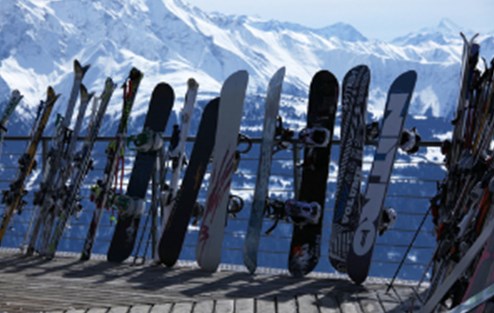Skiing and Snowboarding season is here! These popular winter sports are a great way to stay active. Although the incidence of injury in both skiing and snowboarding is relatively similar, on the body where these injuries occur are markedly different.
Skiers tend to injure the lower extremity – most commonly the knee – while snowboarders are more likely to injure their backs and upper extremity – specifically areas such as the wrist. The most common knee injury in skiing is the MCL (medial collateral ligament) and ACL (anterior cruciate ligament). They occur for different reasons based on the skier’s skill level, the most common being when the knee tilts inwards and the lower leg is forced forwards. This often happens during a fall or when catching an edge. Preventing knee injuries when skiing is multifactorial. With the pediatric and youth skier, appropriate strength is required before jumping into ski boots. This also is true for the adult skier. Areas of specific focus should be in the hip stabilizers, knee stabilizers, hamstrings and lower back. Appropriate equipment is also important. Always wear a helmet. Also, make sure the binding settings are appropriate for both the weight and skill level of the skier. Knee braces are designed to prevent injury during skiing and provide support and stability after injury to keep you on the slopes. There are several different kinds of knee braces for ligament protection – light weight, designed to fit with ski boots, provide the highest level of twisting and lateral movement.
The most common snowboard injury is the wrist. The upper body is used to help generate turning forces on the board. In the event of a loss of balance and a subsequent fall, the instinctive reaction of a snowboarder is to outstretch a hand in order to try and break their fall. This mechanism is commonly known as a ‘FOOSH’ (Fall Onto an Out Stretched Hand). There are wrist braces designed to provide maximum protection for the wrist while allowing range of motion to match your needs. Made of carbon fibre, they are incredibly strong and are designed for high impact sports.
Skiing and snowboarding are great winter sports, which can offer high speed thrills and family fun, however precaution should be taken to prevent injuries this coming season. These preventative steps can take the form of physical conditioning and strengthening of specific body areas, the right protective equipment and being aware of weather conditions. A certified brace fitter focuses on selecting the brace designed for you and your activity level.


